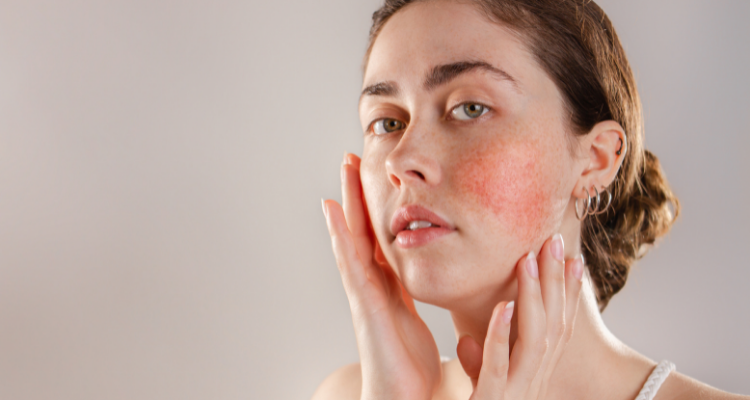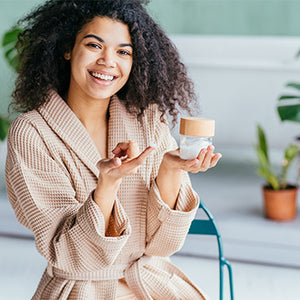
Understanding Rosacea: All You Need to Know about the Skin Condition
Do you suffer from the following?
- A redness on the face which may come and go, often made worse in stressful situations or when going from hot to cold environments or vice versa.
- Persistent skin redness. Persistent facial redness which may resemble a blush or sunburn that does not go away.
- Bumps and pimples. Small red solid bumps or pus-filled spots often develop in rosacea. Sometimes the bumps may resemble acne-like spots, but blackheads are absent. Does your skin burn or sting especially if you apply certain skincare products?
- Visible blood vessels. Can you see small spider like veins that are red and visible normally on the cheeks, nose, chest and neck?
If yes, you may be suffering from Rosacea.
What is Rosacea?
Rosacea is a common, long-term skin condition. It is an inflammatory skin condition that can flare up from time to time. Symptoms of rosacea usually include patchy redness and inflammation, especially on the cheeks, nose, forehead, and chin.
People who have fair skin and who tend to blush easily may be at a higher risk for the disorder. We see the condition a lot in the pharmacy in varying degrees. Rosacea appears more often among women, but men tend to have more severe symptoms. It often starts between the ages of 30 and 50.
Occasionally, some people may experience some swelling of the facial skin. In rare, severe cases, an overgrowth of oil-secreting glands on the nose may cause thickening of the skin.
As the condition gets worse, skin redness becomes more lasting and obvious. Some people also notice stinging or burning feelings. Small, red, solid bumps (called papules) and pus-filled pimples (called pustules) may appear on the skin. Because these look like acne, rosacea is sometimes mistaken for acne.
Causes of Rosacea:
It is not known what causes rosacea however it has been linked to a number of factors including genetics, immune system factors, environmental triggers and the Demodex mite.
In some cases, people with rosacea, can have their symptoms made worse by common triggers such as exposure to ultraviolet light, extremes in temperature, stress, physical activity, alcohol, smoking, spicy food, and hot drinks.
How to treat rosacea using skincare products:
It is important to mention your skincare concerns to your doctor, depending on the severity of your condition your doctor may choose to put you on a course of prescription medication. Always check active ingredients that you may be using with your doctor.
Rosacea patients should avoid any skincare products that sting, burn or cause additional redness. Consistent use of gentle skincare products and effective removal of make up can make a visible difference in managing rosacea and improving the look of your skin. The key is to use products and techniques that minimise irritation.
Here's a step-by-step routine you can follow to get rosacea under control:
- Use a gentle, non-drying, cream or oil facial cleanser. Avoid soaps or astringent cleansers that will dry out the skin or irritate the redness.
I love the probiotic cleanser from Biofresh for clients suffering from rosacea.
- During the day, apply a broad spectrum SPF suitable for sensitive skin and look out for products that also contain healing ingredients such as antioxidants and skin-repairing ingredients. This is the most important way to protect against flare ups of the rosacea.
- Topical vitamin C serum will help strengthen the weakened capillaries and will also act as a powerful antioxidant protecting the skin cells from free radicals. Vitamin C also has an anti-inflammatory effect and thus helps reduce redness associated with inflammation.
- If you have normal to dry skin, in the evening use a lotion or cream moisturiser formulated with nourishing and repairing ingredients, one that will help with fortifying the protective layer on the skin and balancing the acid mantle of the skin.
Topical probiotics help with balancing the microbiome of the skin meaning that it will help protect against inflammation caused by bacteria.
- A light weight moisturiser will help keep moisture in the skin. This can reduce irritation and make the skin feel more comfortable. It will help the skin stay hydrated and plump.
If you have tried all of the above and the rosacea does not seem to be healing then check with your doctor to see which prescription medication is best for you to treat your rosacea.












